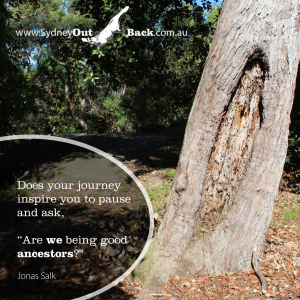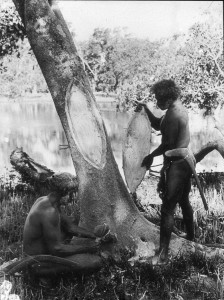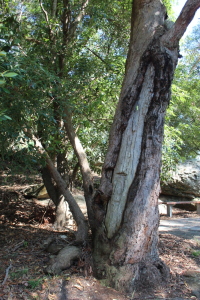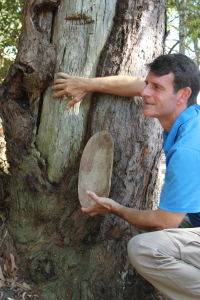5 Facts about the Aboriginal Heritage Site: a Scarred Tree
by
SydneyOutBack.com.au :
February 25th, 2016


Ku-ring-gai Chase National Park is home to the world’s most concentrated collection of more than 1,500 recorded Aboriginal heritage sites, including some unusual and unexpected ones like Aboriginal scarred trees.
Here are 5 facts to help you recognise, and appreciate, this lesser known heritage site in Ku-ring-gai Chase National Park and throughout NSW.
- Many Australians are oblivious to the significance of Aboriginal scarred trees; even their very existence, despite scarred trees originally being comparatively common
- Of more than 7,500 recorded scar trees across Australia, many are recorded in NSW; but few remain in their original location. Many have been lost through felling, land clearing for agriculture or urban development, occasionally for museum collections, and even to bush fires
- Aboriginal scarred trees differ from other types of naturally occurring tree scars because a section of bark has deliberately been removed, not to ringbark and kill the tree for its wood, but to create commonplace perishable materials and tools in a sustainable way; such as shelters, canoes, containers and water carriers, or to mark a living tree for spiritual and historical significance
- In Ku-ring-gai Chase National Park, there are native trees, well over 100 years old. One has scar regrowth hemming dry exposed sapwood (free of knots) in an elongated yet regular shape with parallel sides and pointed/rounded ends. This hints at indigenous bark removal for a large coolamon or perhaps a shield (factoring in natural growth of the tree and its scar); the tree is a heritage site of a surviving Aboriginal scarred tree
- Typically, Aboriginal people used bark from local, mature native trees, commonly box and red gum eucalypt; but also gum species like pine, fig, paperbark and stringybark.
Sydney OutBack tells the story of scarred trees as just one example of how the Guringai Aboriginal people lived in harmony on their traditional lands, applying sustainable bush craft and ingenuity to make essential commonplace tools and materials from natural materials. To learn more about Sydney OutBack’s Wilderness and Aboriginal Explorer Tour and Cruise, just click here.
Our tours are part of Tourism Australia’s Indigenous Tourism Champions Program (ITCP), recognizing that we offer a quality experience that that meets the needs and expectations of international visitors.
To find out more about Aboriginal scarred trees, consider reading http://www.aboriginalheritage.org/sites/identification/ and http://www.environment.nsw.gov.au/resources/cultureheritage/ScarredTreeManual.pdf
* The heritage photo is one from Sydney OutBack’s own archive collection of old photos, but is also visible online at http://www.davesact.com/2011/06/aboriginal-scarred-trees.html


0 Flares
0
Facebook
0
Google+
0
LinkedIn
0
0 Flares
×
